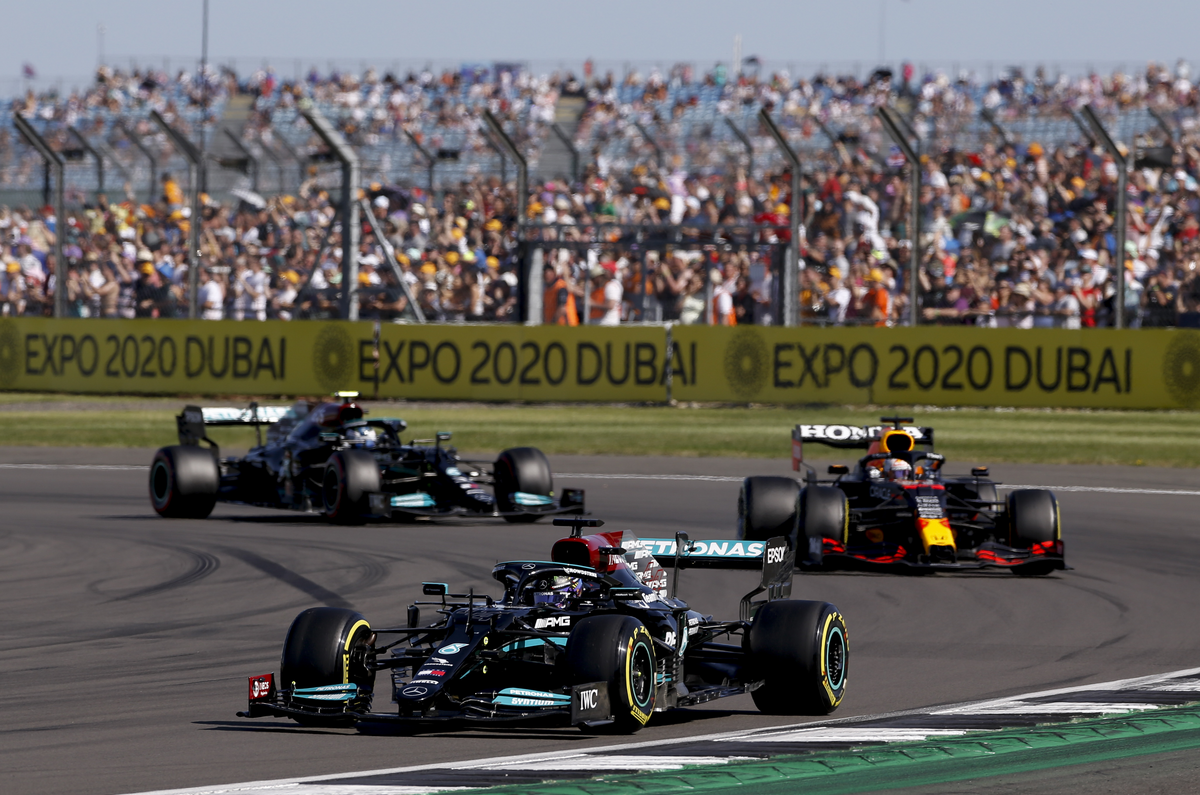It could hardly have been a more heartening experience to be back at Silverstone for the British Grand Prix along with some other 140,000 other fans at the weekend, after all the terrible hardships of the past 16 months.
The best Formula 1 crowd in the world had no need for masks or social distancing, either, thanks to the race being part of the UK government’s Events Research Programme.
Bedecked in the orange of McLaren's Lando Norris, the white of Mercedes-AMG's Sir Lewis Hamilton and the blue of Williams’ George Russell, they were as vocal as ever.
It makes perfect sense, then, that Silverstone was the venue at which F1 management decided to trial a new qualifying format. Alpine driver Fernando Alonso told me beforehand that he believed it was being introduced primarily for the benefit of the fans.
Usually, the drivers compete in a Saturday time-trial session to set the fastest lap, split over three sessions in which the field is whittled down from 20 to 15 to 10. The order of their lap times then decides the grid for Sunday’s grand prix.
Several qualifying formats have been tried in F1 since it dropped its original format in 1996, but this is one of the longest serving and in my view the best. One-shot qualifying never seemed to work as well or engage as much; aggregate qualifying was very unpopular; and the less said about the ill-conceived ‘five-minute window’ thing tried in 2016 the better.
At Silverstone, regular qualifying was held after the first free practice session on Friday morning, determining the grid order for a 17-lap sprint qualifying race to be held on Saturday, after second practice. The result of this sprint race would then set the grid for the grand prix proper.
The top three finishers also would receive three, two and one championship points – plus an old-school victory lap atop a flatbed truck wearing garlands. This might have looked cringeworthy on the TV, but it was well received by most of the trackside supporters.
The actual race, though? Hmm. The crowd went mild. The support races had already shown it to be fairly difficult to close up and overtake in such boiling weather, and F1 wasn’t much better. Save for an excellent start from Fernando Alonso and an embarrassing spin for Sergio Pérez, the order hardly changed.
And, predictably, Hamilton and Max Verstappen roared off into a huge lead within just a few laps, and the gaps between the cars were soon very noticeable – save for Alonso battling the McLarens and Pérez charging back up the order (an effort that proved in vain).
It seemed to me that the only outcome change was a little boost for Alonso and Pérez unjustly having to start from the back after his engine failed.
F1 MD Ross Brawn clearly didn’t agree with my trackside evaluation, saying “the fans loved it” and calling the race “sensational”, while the drivers were either neutral or positive about the new format.
From my view trackside, though, Sprint qualifying seemed something of a failure. Nowhere near as bad as some we’ve seen before, but really, what was the point? It just felt like the race proper truncated – nothing different or especially gripping.
Also note how almost all F1 fans do actually enjoy regular qualifying – even from the trackside, as you can follow it properly thanks to the huge TVs dotted around. The huge roar that erupted as Russell went seventh in the laggard Williams on Friday is all the evidence you need of that.
I’m sure it would attract massive grumblings from the F1 traditionalists, but I reckon this format could work amazingly if the cars were to start the Sprint race in reverse championship order. Imagine Hamilton and Verstappen going from the back, having to fight past F1’s fantastic midfield, while the likes of Haas, Alfa Romeo and Williams desperately try to maintain good Sunday starting spots.
Now that’s a qualifying session that I could never miss.




Join the debate
Add your comment
As a viewer for more than fifty years, I thought the sprint qualifying was brilliant, a huge improvement on the usual format. Congratulations to F1 Management .
Great shout, Sabre! I had not thought about Mazepin being on pole and what that would subsequently bring! Should not be in an F1 car and I am sure he wouldn't if Daddy wasn't paying.
A single Sprint race is too early to decide, but this one did not prove positive. The reverse order is an interesting proposition, however Mazepin in pole position will bring the cost cap up due to necessary repair cost of most cars.